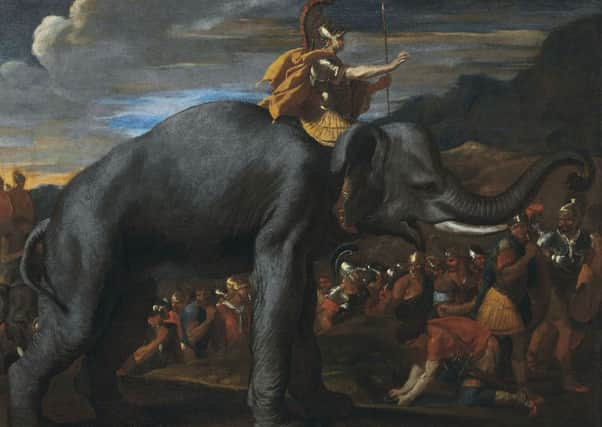Queen's scientists find Hannibal evidence


Some of the greatest scholars through the centuries have put forward theories about the possible route taken by Hannibal’s 30,000-strong army - along with 37 elephants and more than 15,000 horses.
Napoleon is even reputed to have taken an interest in what has proved to be one of the most fascinating and enduring stories of military success of all time.
Advertisement
Hide AdAdvertisement
Hide AdNow, using a combination of microbial genetic analysis, environmental chemistry, pollen analysis and various geophysical techniques, the microbiologists from Queen’s have discovered a large quantity of faecal materials – most likely from horses – at a site near Col de la Traversette on the modern day France/Italy border.
They say the dung, which has been dated to around 200BC using carbon isotope analysis, puts it very close to the historical date (218BC) for Hannibal’s mission during the Second Punic War with Rome.
The samples were found at a pond that is one of the few in the area suitable for watering a large number of animals.
Until now, no solid archaeological evidence has been forthcoming.
Advertisement
Hide AdAdvertisement
Hide AdHowever, this week – publishing online in the Journal Archaeometry – Queen’s microbiologist Dr Chris Allen and his international team of colleagues, led by Professor Bill Mahaney of York University, Toronto, have been able to solid evidence for the most likely transit route.
Almost 3,000m above sea level, it was first proposed more than a half century ago by the biologist and polymath Sir Gavin de Beer, but not widely accepted by the academic community.
Dr Chris Allen, from the Institute for Global Food Security at Queen’s, said: “The deposition lies within a churned-up mass from a one-metre thick alluvial mire, produced by the constant movement of thousands of animals and humans.
“Over 70 per cent of the microbes in horse manure are from a group known as the Clostridia, that are very stable in soil - surviving for thousands of years.
Advertisement
Hide AdAdvertisement
Hide Ad“We found scientifically significant evidence of these same bugs in a genetic microbial signature precisely dating to the time of the Punic invasion.”
Dr Allen said it is now up to the French authorities if they want to invest in a major archealogical expedition to search for related artefacts.
The QUB research was conducted in collaboration with a group of researchers based in the Republic of Ireland, Canada, US, France and Estonia.